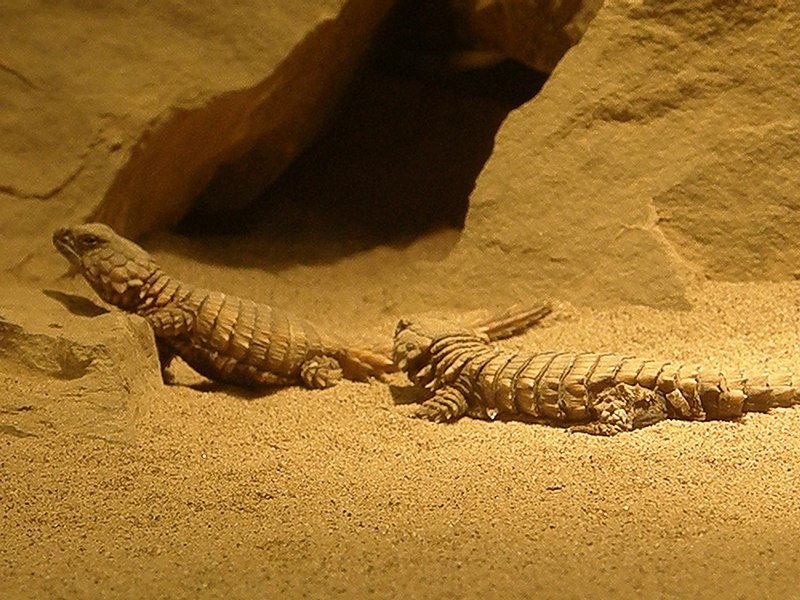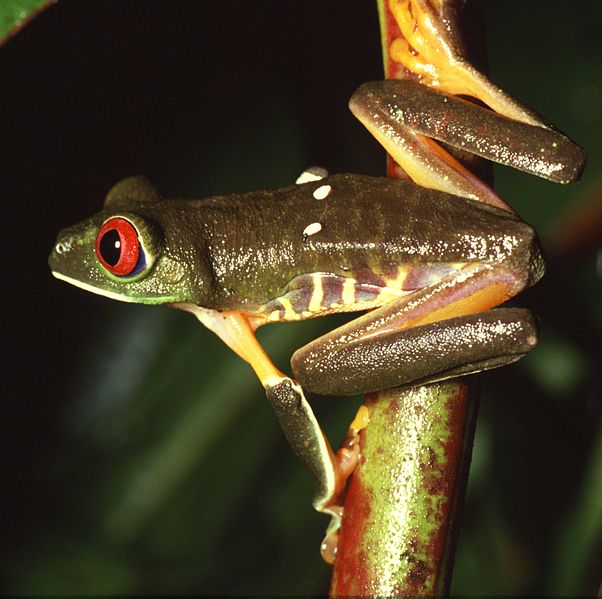Like most reptile keepers, I have often marveled at the efficiency of snake digestive systems. I attributed their abilities to break down bone to “powerful digestive enzymes”, but recent research has shown that, at least for Burmese Pythons (Python molurus), a far more complex and amazing process is at work.
Digesting Large Vertebrates
 I’ve observed some quite large snake feasts – a Red Foot Tortoise and a 60 pound deer taken by Green Anacondas (the tortoise was an unfortunate exhibit mate; the deer fell to an anaconda at my study site in Venezuela) and 40 pound pigs regularly fed to Reticulated and Burmese Pythons under my care at the Bronx Zoo, for example.
I’ve observed some quite large snake feasts – a Red Foot Tortoise and a 60 pound deer taken by Green Anacondas (the tortoise was an unfortunate exhibit mate; the deer fell to an anaconda at my study site in Venezuela) and 40 pound pigs regularly fed to Reticulated and Burmese Pythons under my care at the Bronx Zoo, for example.
A few shell scutes, hoofs, some bone fragments and fur where all that passed in the feces of these snakes – the rest being digested. How do they do it?
Bone-Digesting Cells
Research at the Louis Pasteur and Indiana Universities has revealed that, after feeding, the digestive systems of Burmese Pythons undergo a dramatic transformation. New cells are produced and worn-out cells die and are eliminated in preparation for the work at hand.
Studies of the small intestine have uncovered a new type of cell, previously unknown to science. These cells are responsible for degrading bone and releasing its components into the snake’s bloodstream. This process promotes efficient calcium absorption, and may be the reason that most captive snakes do not require a UVB source if fed a diet comprised of whole rats, mice and other vertebrates.
Warm-Blooded Snakes? Not Quite, but…
We’ve known for some time now that Burmese Pythons break the “cold-blooded” rule when digesting their meals. While most snakes must seek out a hot basking spot in order to maximize digestion, Burmese Pythons can actually raise their internal temperatures without an external heat source!
Further Reading
Please see Big Snake Meals for some examples of how large (and unusual) snake prey can be.
To read about recent research concerning another unusual snake feeding adaptation, please see How Snakes Grow despite Food Deprivation.
An account of the original research showing that pythons can raise their body temperatures may be found in this Journal of Herpetology article.
 That Reptile Blog – Reptile, Amphibian and Exotic Pet Care and Information
That Reptile Blog – Reptile, Amphibian and Exotic Pet Care and Information

 In their native South Africa, Tropical Girdled Lizards hibernate during the winter, and a cooling off period was believed necessary to induce captive reproduction. Good results are usually achieved after captives have been held at temperatures of 58-60 F for 4-6 weeks. During this time they move about a bit, and drink, but do not feed.
In their native South Africa, Tropical Girdled Lizards hibernate during the winter, and a cooling off period was believed necessary to induce captive reproduction. Good results are usually achieved after captives have been held at temperatures of 58-60 F for 4-6 weeks. During this time they move about a bit, and drink, but do not feed.
 Calcium Spray supplies calcium in three forms, including Calcium Gluconate, which is readily utilized by many species. It can also be administered orally to animals with deficiencies (a consultation with your veterinarian would be advisable beforehand).
Calcium Spray supplies calcium in three forms, including Calcium Gluconate, which is readily utilized by many species. It can also be administered orally to animals with deficiencies (a consultation with your veterinarian would be advisable beforehand). My own view has always been that it makes sense for people living in the tropics to avoid all snakes and spiders, and I’ve observed that this lesson is taught to children early in life in many places.
My own view has always been that it makes sense for people living in the tropics to avoid all snakes and spiders, and I’ve observed that this lesson is taught to children early in life in many places.